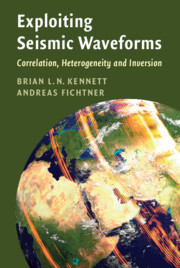Book contents
- Frontmatter
- Dedication
- Contents
- Preface
- 1 Introduction
- Part I Building the Seismic Wavefield
- Part II Correlation Wavefields
- Part III Interaction of Seismic Waves with Heterogeneity
- Part IV Inversion for Earth Structure
- 14 Inference for Structure
- 15 Gradient Methods for Nonlinear Inversion
- 16 Adjoint Methods and Sensitivity Analysis
- 17 Waveform Inversion of Event Data
- 18 Waveform Inversion of Correlation Data
- 19 New Directions
- Appendix Table of Notation
- Bibliography
- Index
14 - Inference for Structure
from Part IV - Inversion for Earth Structure
Published online by Cambridge University Press: 16 November 2020
- Frontmatter
- Dedication
- Contents
- Preface
- 1 Introduction
- Part I Building the Seismic Wavefield
- Part II Correlation Wavefields
- Part III Interaction of Seismic Waves with Heterogeneity
- Part IV Inversion for Earth Structure
- 14 Inference for Structure
- 15 Gradient Methods for Nonlinear Inversion
- 16 Adjoint Methods and Sensitivity Analysis
- 17 Waveform Inversion of Event Data
- 18 Waveform Inversion of Correlation Data
- 19 New Directions
- Appendix Table of Notation
- Bibliography
- Index
Summary
We here establish basic inversion framework in a Bayesian context, with introduction of measures of data fit and model suitability. We introduce Bayes’ theorem and identify the conditional probability with posterior probability distribution for model parameters through a composite misfit combining the match between observations and simulations and assumptions about the nature of acceptable models. We discuss Monte Carlo techniques and the assessment of model resolution, leading into the formulation of the non-linear inversion process in terms of optimisation of a measure of misfit.
Information
- Type
- Chapter
- Information
- Exploiting Seismic WaveformsCorrelation, Heterogeneity and Inversion, pp. 337 - 354Publisher: Cambridge University PressPrint publication year: 2020
